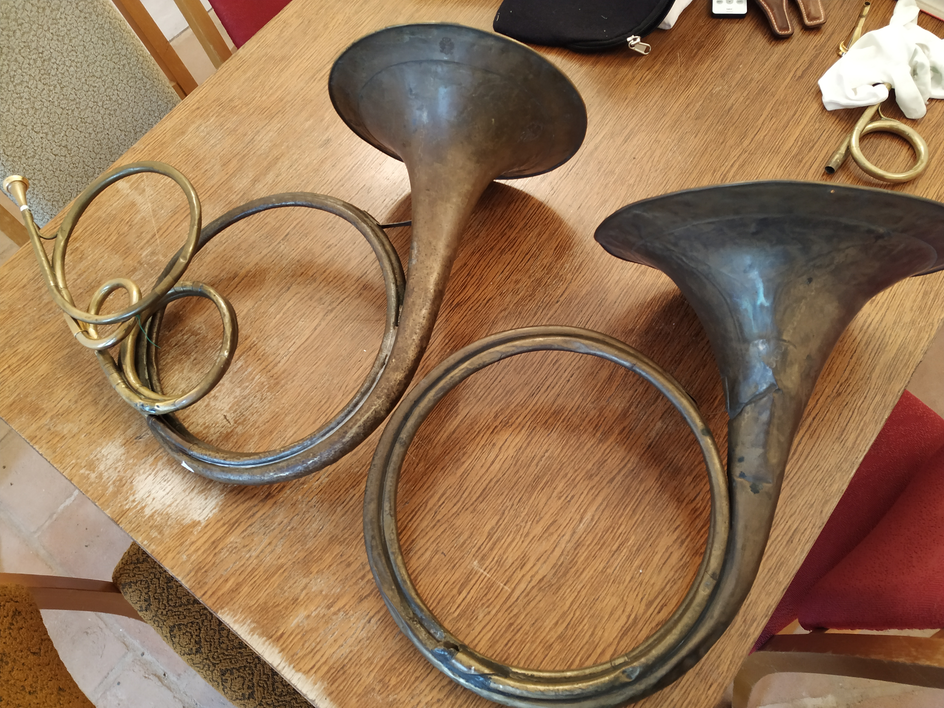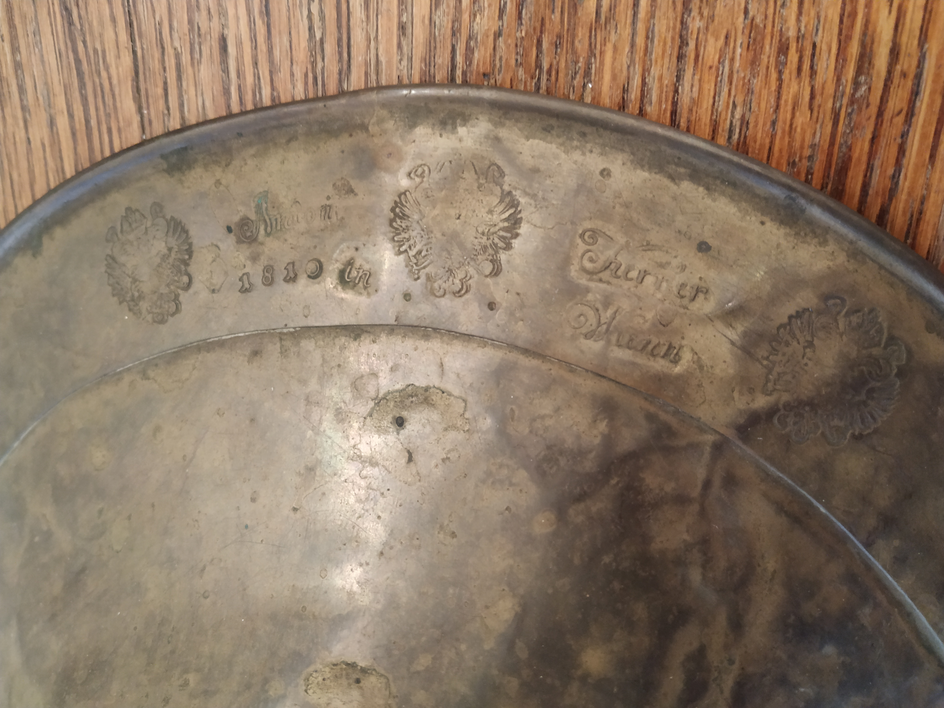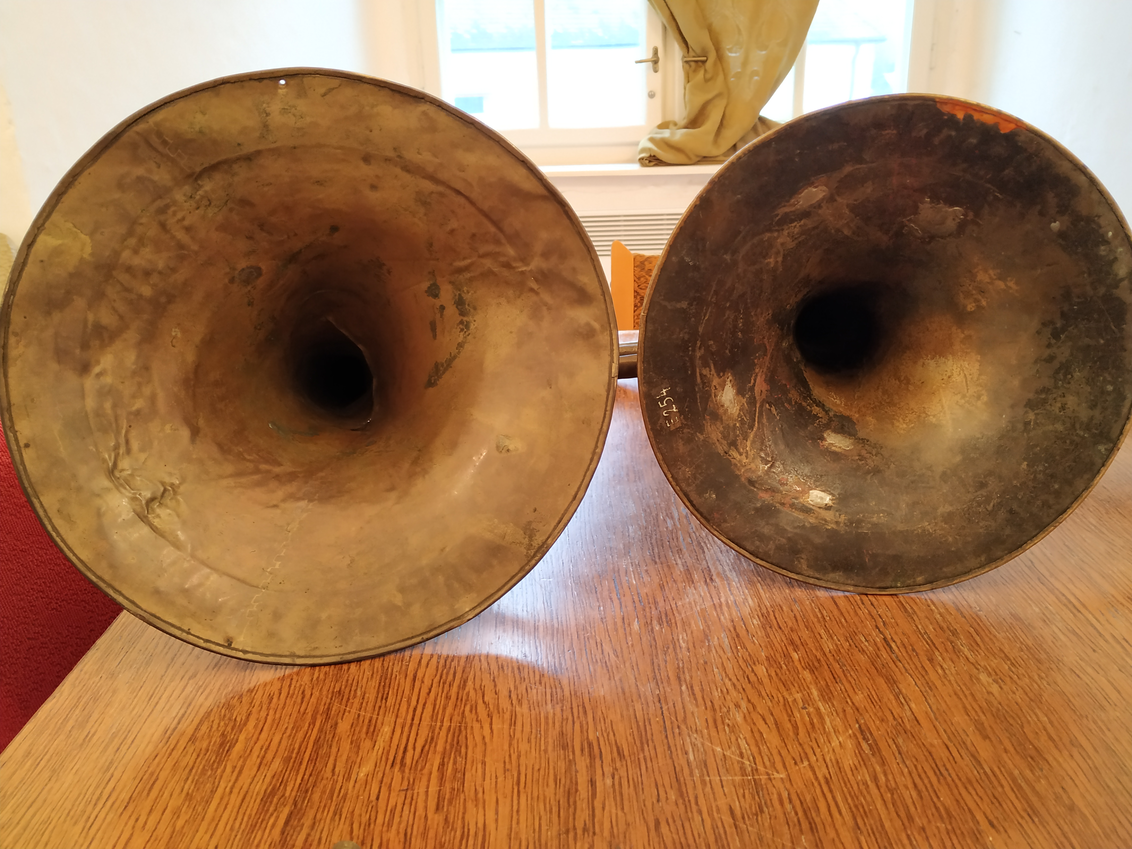Along with the 1760 Kerner was another from 1810, unfortunately unplayable because of the broken socket in which crooks are to be inserted.
Although the corpus was the same size and the pipes were the same diameter as the 1760, the bell was much larger and deeper. This illustrates without a doubt the development of the hand technique over a 50 years period.
This particular horn itself is a bit out of subject since by 1810 Mozart has been dead for 20 years ; but it can be used as a clue. If the 1760 is the « before » and the 1810 the « after », we could imagine that the bell of a horn made in the 1770’s or 80’s (when the horn concertos were written) would be somwhere in-between those two bell sizes.
Also, is it not interesting to notice that :
- in 1810, something like 50 years after the invention of the tuning slide, horns of this very simple type, without any slide (maybe fixed-pitch ?) were still being made, showing - again - how popular it was ?
- In 1810, Kerner was still using the pattern of the corpus he used in 1760. Same size, same diameter of pipe, only the bell changed. Was Kerner trying to keep a certain esthetic of definition, clarity and lightness of playing, while answering the needs of the development of the hand technique ?
Thus, the « in-between horn », perfect for Mozart’s concerto, would be just like the 1760 Kerner but probably with a bell a bit larger for an improved hand technique.


